With the commotion of spring winding down, I am now able to take a breath and catch up on a few things, including adding a few posts to this blog. Back on 5 May, I had a nice opportunity to capture a few photos of one of my favorite birds near Grafton, Fillmore County. Buff-breasted Sandpipers, or Buffies as they are sometimes called, look rather plain from afar and nowadays they usually occur in agricultural fields during their brief stay each spring in the Rainwater Basin of south-central Nebraska. Buffies are also difficult to see most of the time because they naturally blend in with their environment, as can be seen in the photo, below.
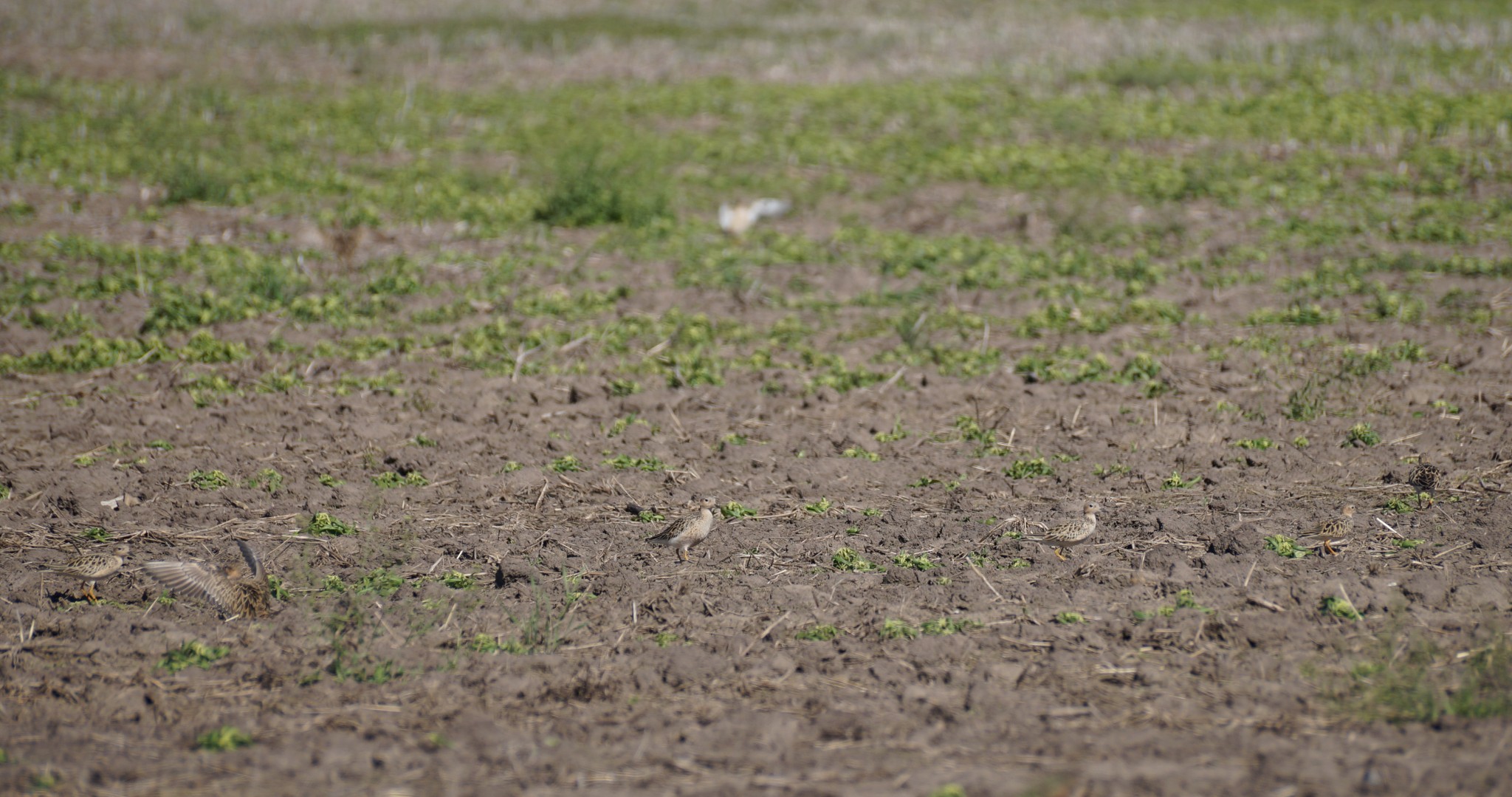
How many do you see in the photo? See how many I see at the bottom of this post.
Even though Buffies are plain, difficult-to-see and seeing them in agricutlural fields may not sound like an idyllic wildlife experience, these little birds become very interesting when you get to know them. Here are a few reasons why:
- Buff-breasted Sandpipers migrate extreme distances: Buff-breasted Sandpipers migrate between wintering areas in southern South American and breeding sites in the North American Arctic. Any one bird can travel up to 20,000 miles in a year. Some birds even fly to eastern Russia to breed.
- Nebraska’s Rainwater Basin is an important spring stopover area: Buffies follow a relatively narrow spring migration corridor through the North American Great Plains. Eastern portions of the Rainwater Basin in south-central Nebraska are a primary stopover site for this species, and research shows nearly the entire population stops-over here.
- Buff-breasted Sandpipers are North America’s only lekking shorebird: In Nebraska, Greater Prairie-Chickens and Sharp-tailed Grouse usually come to mind when the word lek is used. However, a few other species employ this mating system and the Buff-breasted Sandpiper is one of them. In case you don’t know, leks are sites where males congregate and perform displays in an attempt to woo, and ultimately, mate with a female.
- Buff-breasted Sandpipers’ display during their spring stopover in Nebraska: Even though Buffies are challenging to find and see in agricultural fields in the Rainwater Basin, they put on a good show once they are discovered. When they stopover in the Rainwater Basin in May, they are only weeks away from arriving on their Arctic breeding grounds. Thus, males need to practice their moves to impress the ladies. Buffies primary courtship display is the double-winged courtship embrace. Males stand erect and open their wings. From the backside, such as in the picture below, the display does not readily catch one’s eye.
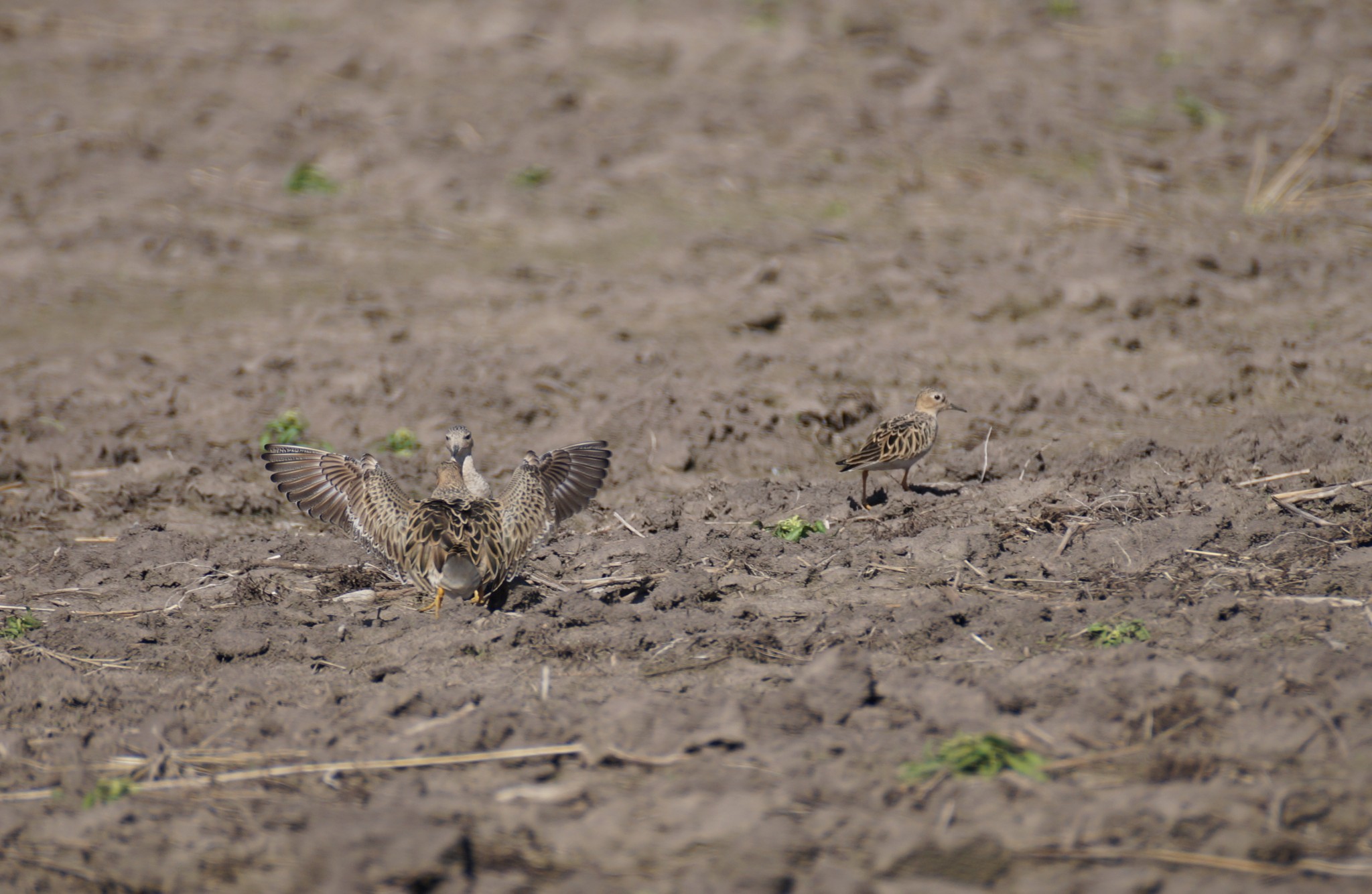
When viewed from the front, the male’s bright white and intricately patterned underside of the wing is revealed. In addition, the male puffs out his chest, looks towards the sky and does what some may describe as a little dance. Below are a few more shots of Buffies performing double-wing courtship embraces in Nebraska.
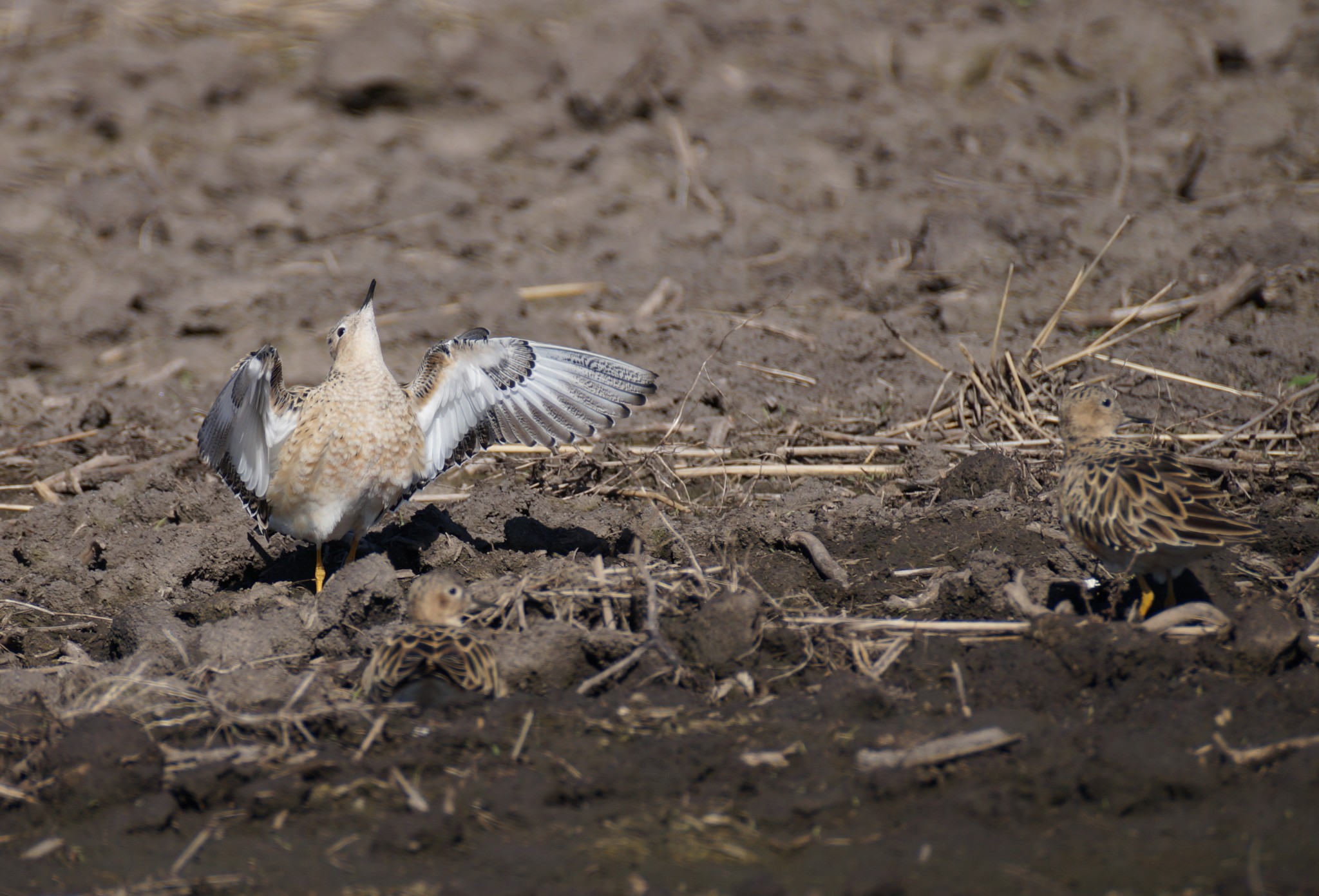
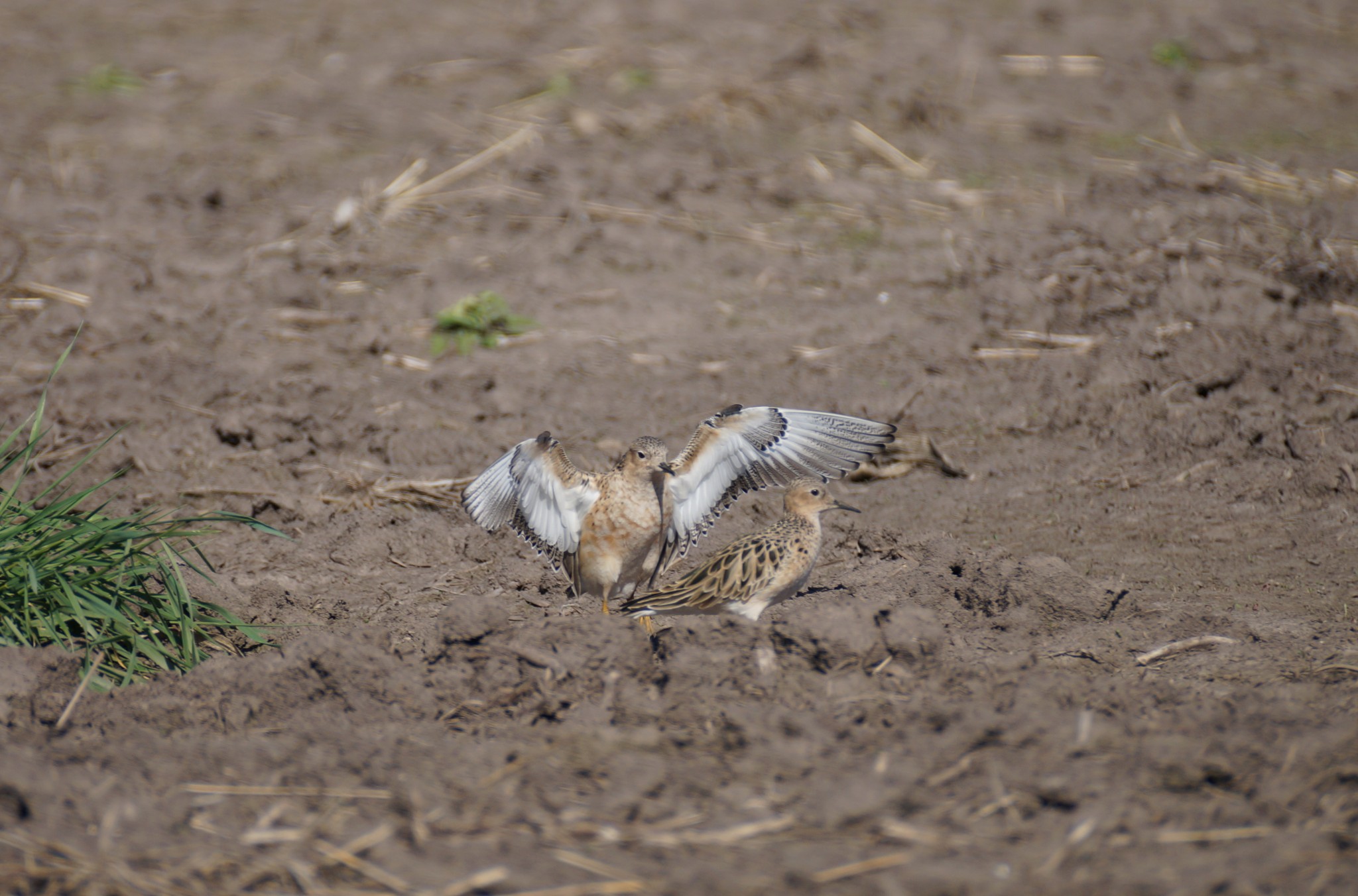
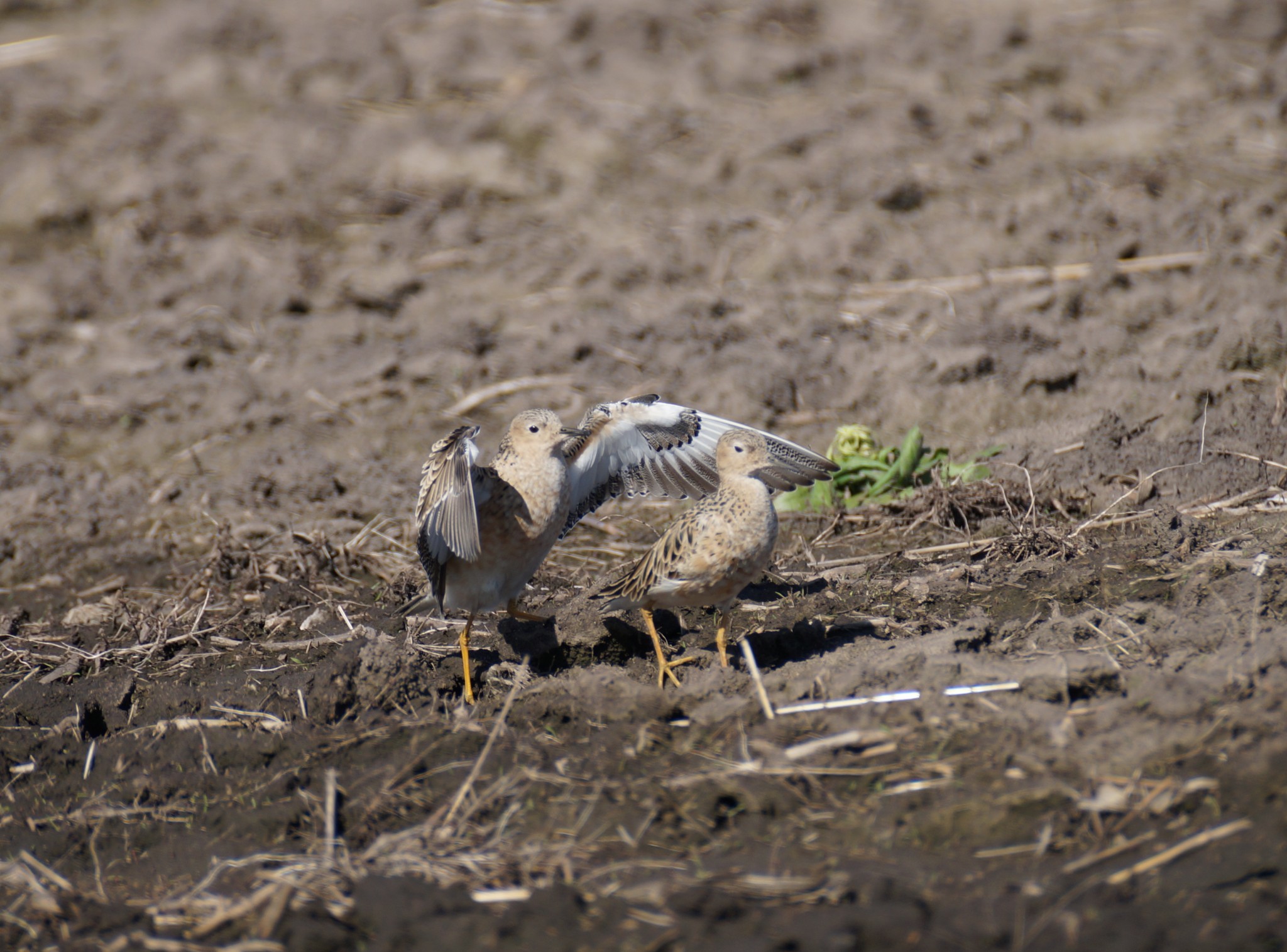
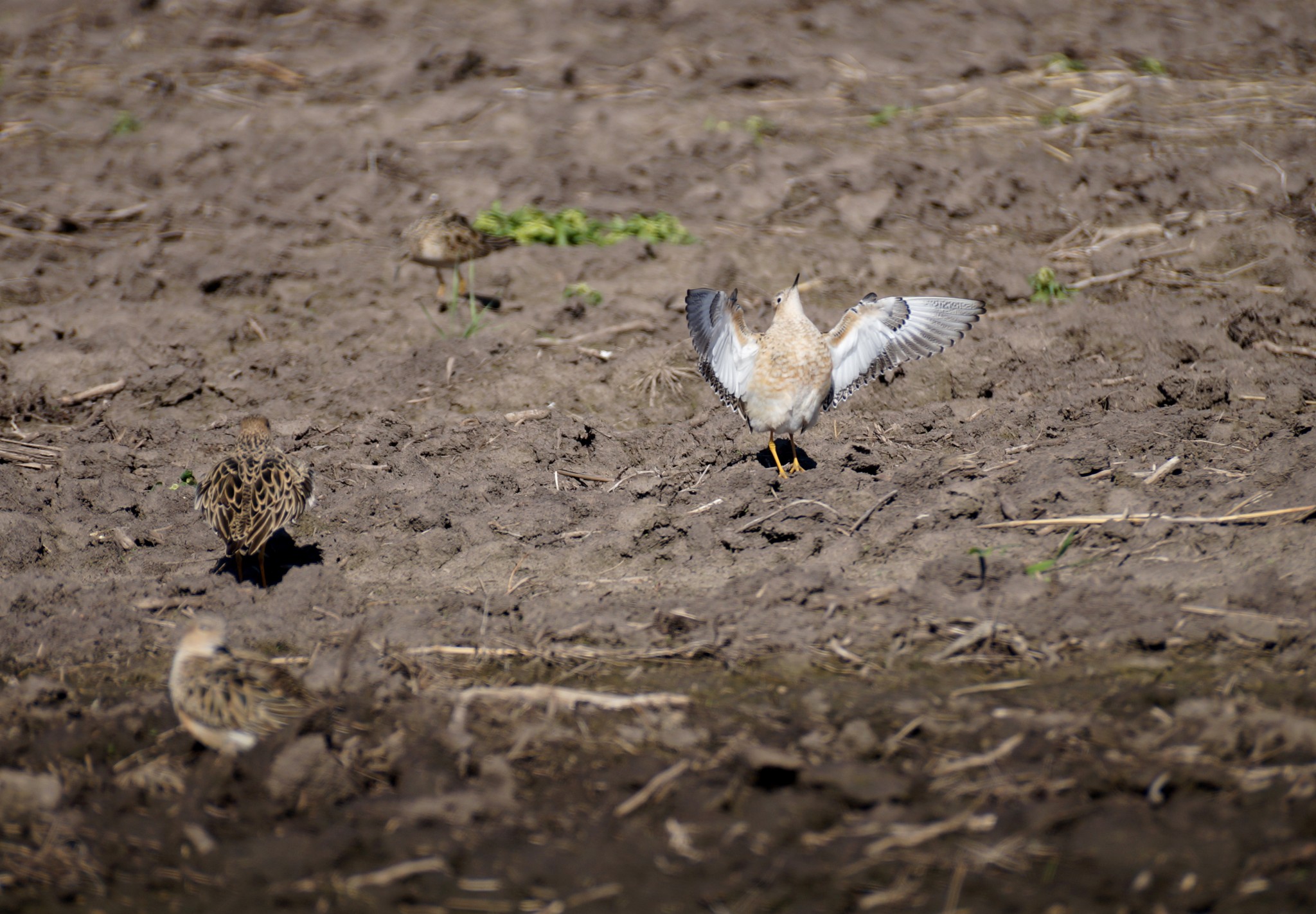
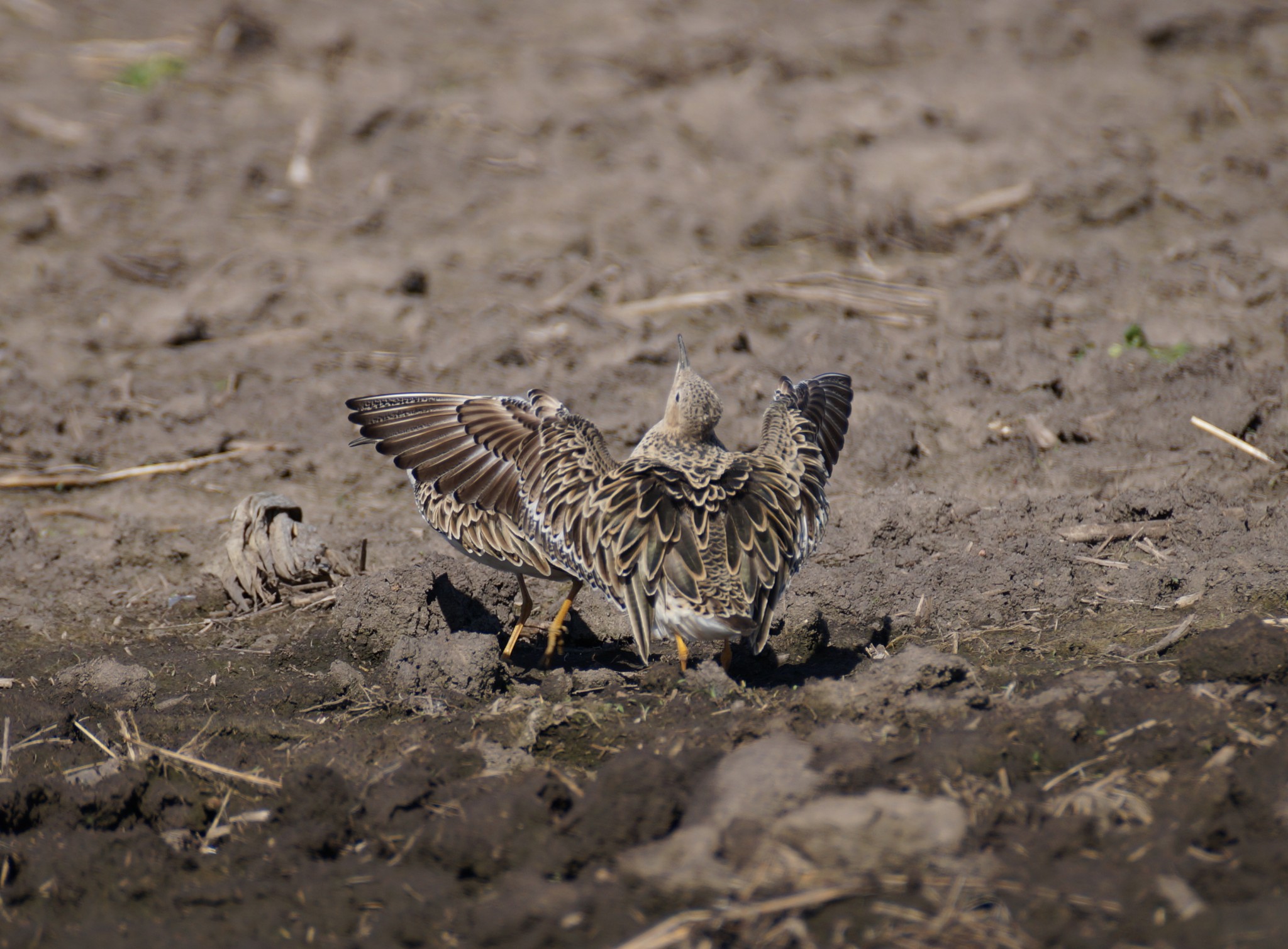
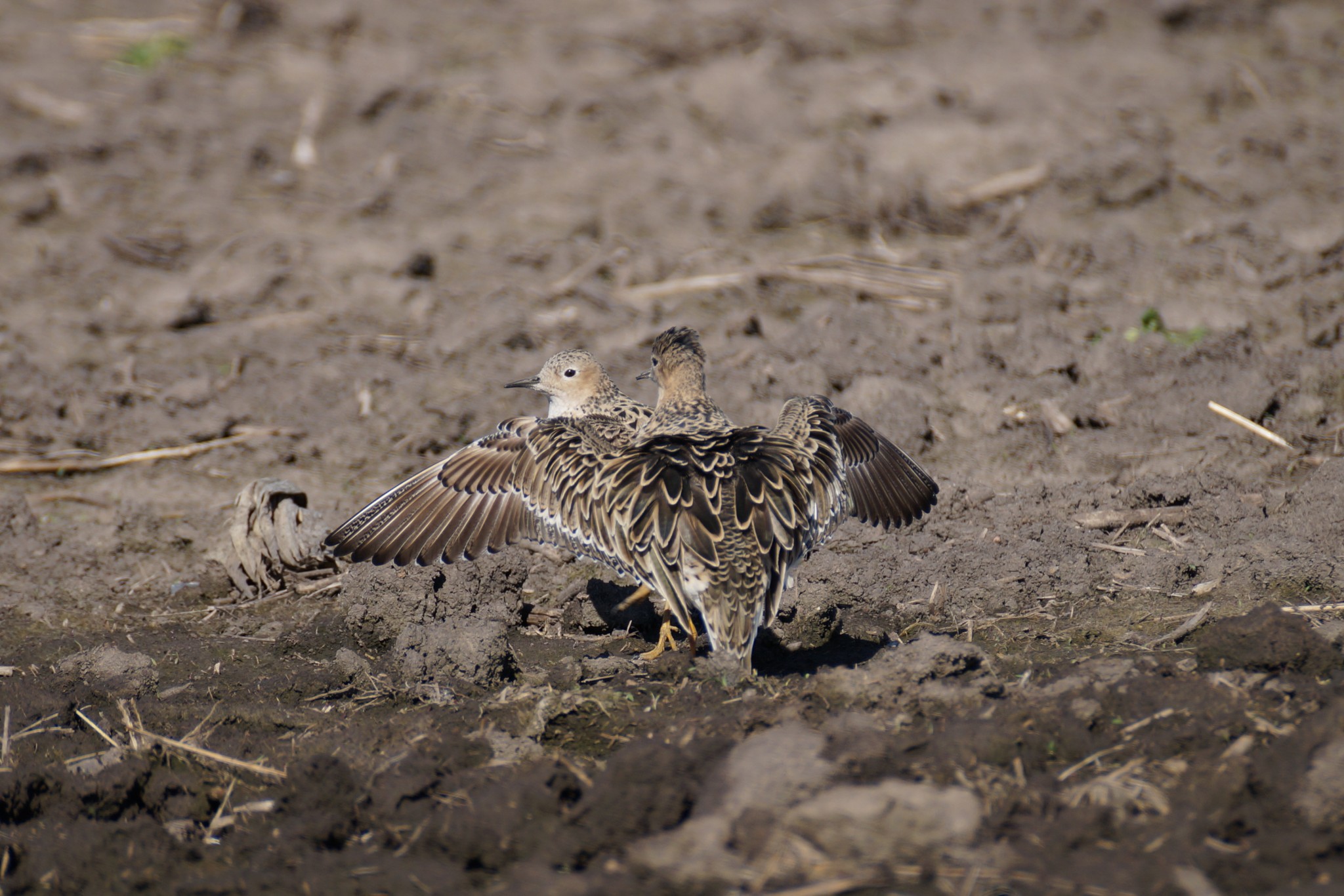
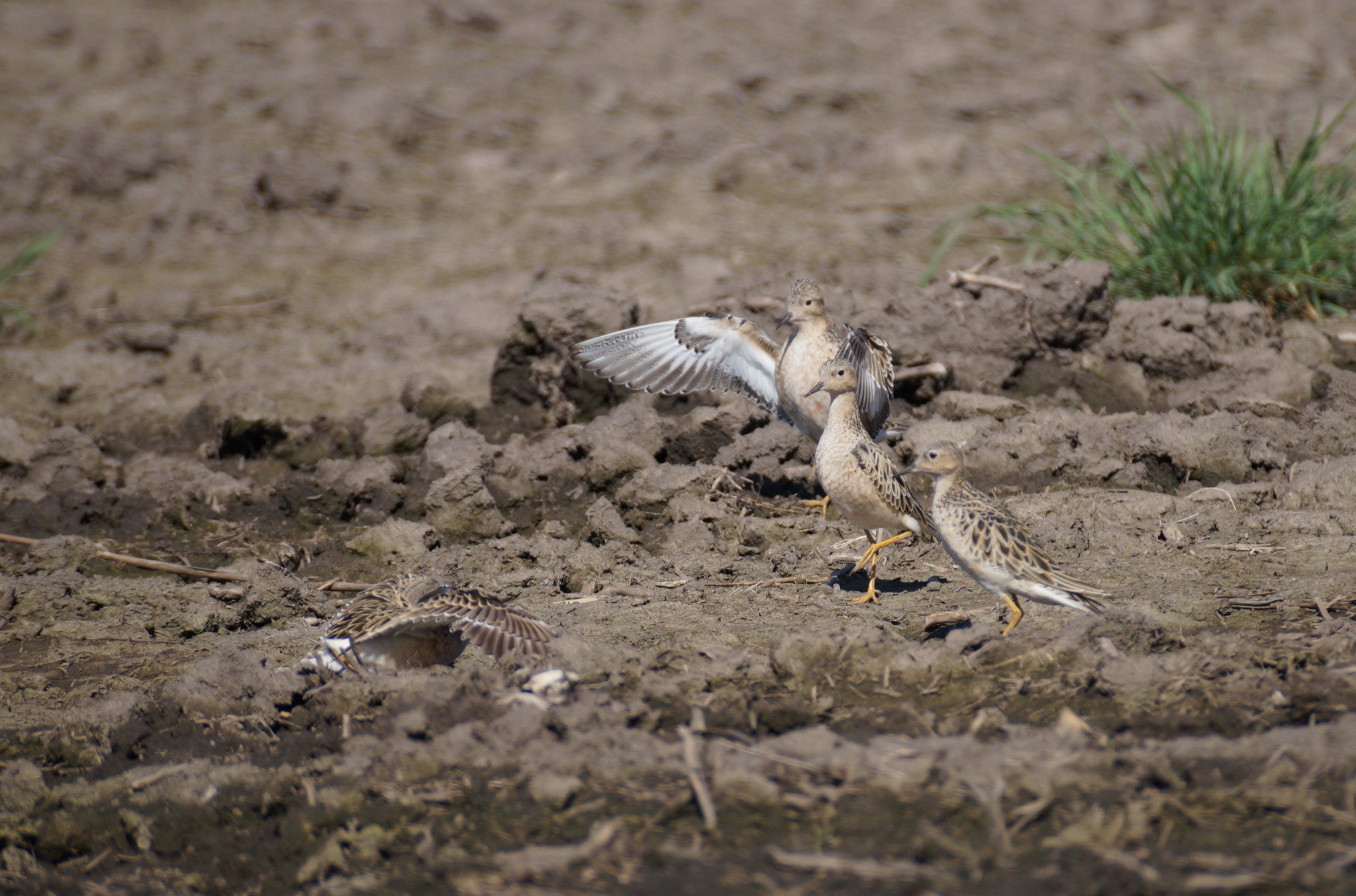
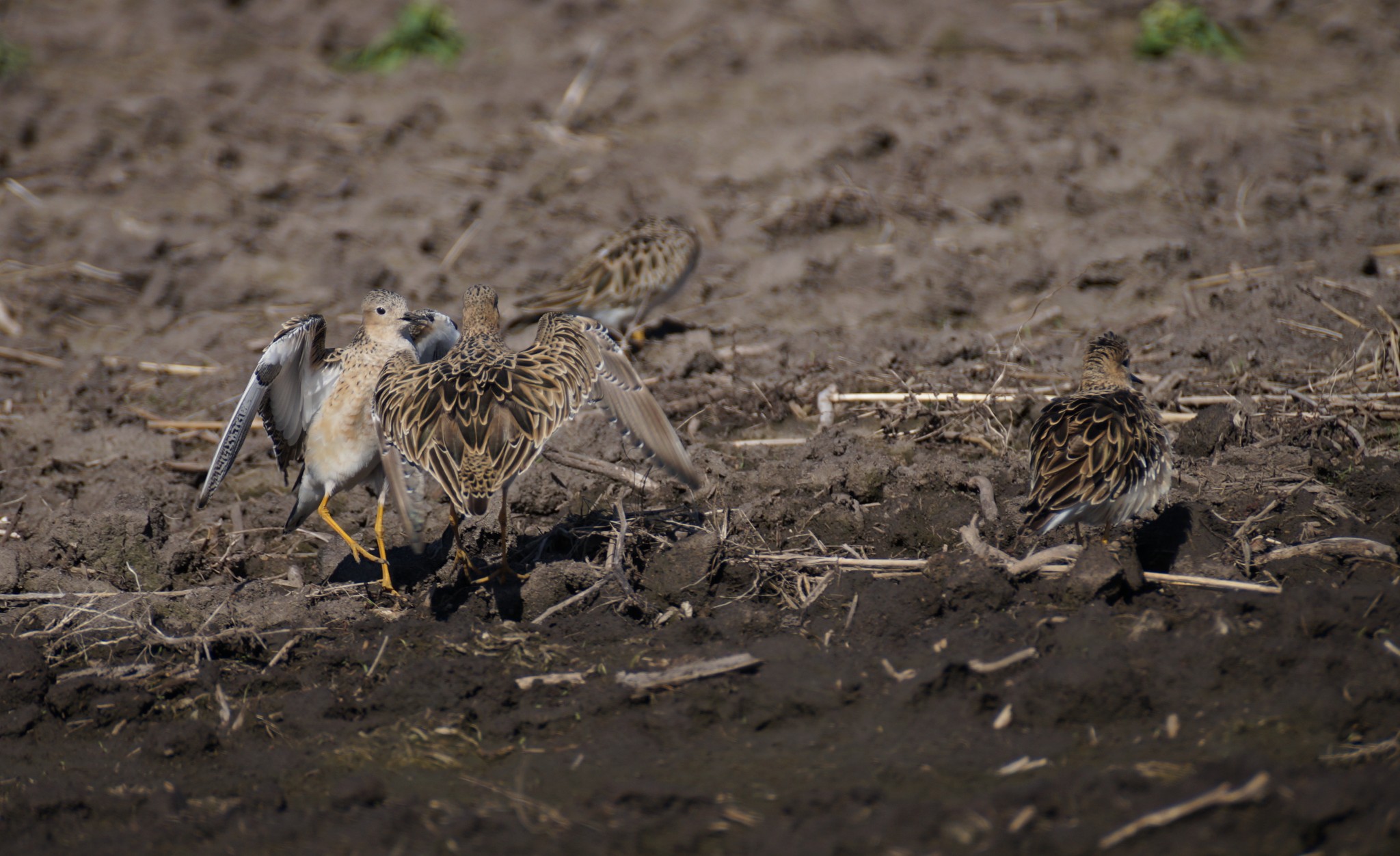
Most Buffies have migrated north of Nebraska by now and a few may already be arriving in the high Arctic. A few will come through again late July through September. You can be assured they will be back next May performing their courtship displays in agricultural fields in south-central Nebraska.
If you want to learn more information about Buff-breasted Sandpiers, consider watching the You Tube classic, The Buff-breasted Sandpiper Show which stars John McCarty, LaReesa Wolfenbarger and myself.
By the way, I count seven Buffies in the top photo. There is one more Buff-breasted Sandpiper below this sentence. If you find it–gold star!
Good birding!
The post What are these birds & what are they doing? appeared first on NEBRASKALand Magazine.

















